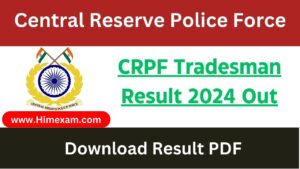HPPSC Shimla Scientific Officer (DNA) Exam Syllabus
|| HPPSC Shimla Scientific Officer (DNA) Exam Syllabus|| HPPSC Shimla Scientific Officer (DNA) Exam Pattern||
THE SCREENING TEST WILL BE OF 02 HOURS DURATION CONSISTING OF 100 MULTIPLE CHOICE QUESTIONS
1. History and Development of Forensic Science, Definition of Forensic Science, Need of Forensic Science, Basic Principles of Forensic Science (Law of Individuality, Principle of exchange, law of probability). Biological evidence: Importance, nature, location, collection and evaluation. Forensic significance of body fluids as blood, semen, saliva, sweat, milk and urine, their collection and identification. Preparation of solutions, buffers, use of buffers in DNA analysis. Concept of Normality, Molarity, Molality and their calculations. :-30 questions of 30 marks
2.Electrophoresis Theory and General Principles, Various factors affecting electrophoresis, Low and High Voltage electrophoresis, Horizontal and Vertical Electrophoresis. Various electrophoresis techniques- Immuno-electrophoresis, Native PAGE, Sodium dodecyl sulphate (SDS-PAGE) polyacrylamide gel electrophoresis, Iso-electric focusing (IEF), Capillary electrophoresis-Theory and basic principles, Instrumentation, Forensic applications. DNA Profiling: Introduction, History of DNA Typing, human genetics, mitotosis, meiosis, heredity, alleles, mutations and population genetics, Hardy Weinberg law, molecular biology of DNA, variations, polymorphism, RFLP analysis, PCR amplifications, VNTRs, STRs, Mitochondrial DNA, SNPs, Sampling in forensic DNA analysis, DNA, Multiplex PCR, STR Markers used in Forensic DNA analysis, Commercially available STR Kits, Stutter products, non-template addition, microvariants, null alleles and mutation rates, issue of degraded DNA, PCR inhibition, contamination, mixed samples and low copy number. Use of SNPs and other bi-allelic markers in forensic DNA analysis. Y-STR based testing. Non-human DNA testing and microbial forensics. Use of Capillary electrophoresis in forensic DNA profiling, validated capillary electrophoresis platforms for forensic DNA, fluorescent labeling in multiplex kits, fluorescent detection. Instrumentation for forensic STR typinf, ABI 310,3100,3130,3500 etc. STR genotyping issue. Evaluation of results, frequency estimate calculations, interpretations, allele frequency determination, match probability, DNA data bases CODIS, GenBank etc. STR population data base analysis, likelihood ratios, source attribution, analysis mixed DNA profiles, kinship and parentage testing, probability of paternity etc. DNA analysis in mass disasters.:-50 questions of 50 marks
3 General Knowledge (National & International level 10 questions of 10 marks
4 General Knowledge of H.P. 10 question of 10 marks

%20Exam%20Syllabus.jpg)



